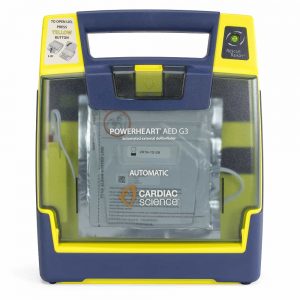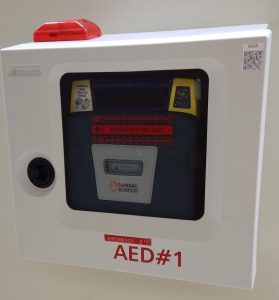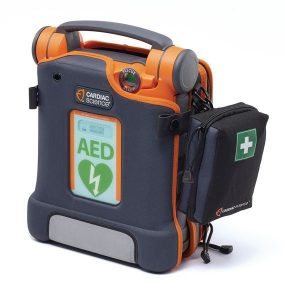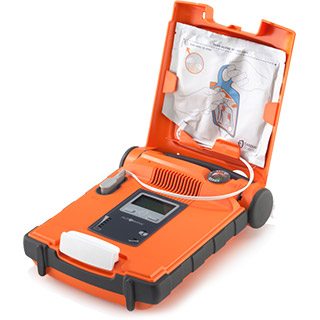


Automated external defibrillators (AEDs) are used to deliver electric shocks to cardiac arrest victims. Their use drastically improves the likelihood of a victim surviving cardiac arrest without damaged brain function.
AEDs are present in every building on campus; they are typically located on the first floor in one of the main hallways.
AEDs are designed to be used without training. The AEDs on campus verbally walk through each step. Opening the lid initiates the instructions and each instruction is repeated until the step is completed.
Steps for using an AED:
- Call 911 – The AED cabinet will alarm when opened but it does not call 911
- Bring the AED to the victim
- Use scissors to remove clothes from the victim’s chest; there are scissors in the AED container
- Use razor to shave chest hair if necessary, the electrodes must come into direct contact with the skin; there is a razor in the AED container
- Follow AED voice commands, commands will also be displayed on the AED if hearing is a problem
Leave the AED on the victim once it is applied. It will continue to read the heart rhythm and record the information it collects. When emergency responders arrive they may take the AED with them to have the information downloaded at the hospital.
AEDs are very good at reading heart rhythms, they will not deliver a shock unless it is required. As a result, they can be safely applied to any unresponsive person. If there is any possibility that the AED is necessary, apply the AED and let the AED figure out if it is needed.


